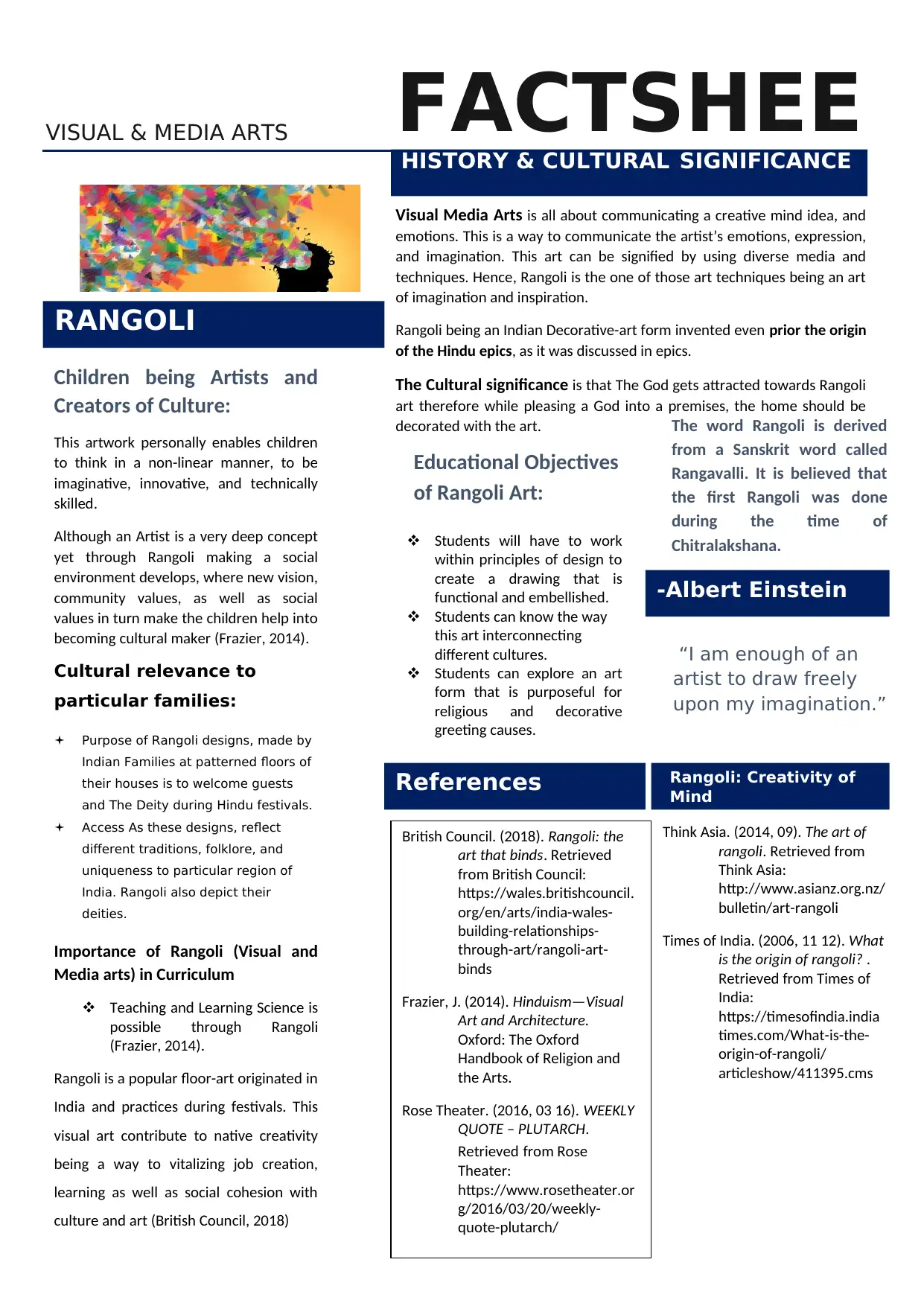Rangoli Art Factsheet: Cultural Significance, History, and Education
VerifiedAdded on 2023/06/08
|1
|561
|386
Report
AI Summary
This report provides a detailed factsheet on Rangoli art, exploring its history, cultural significance, and value as an educational tool. It discusses how Rangoli challenges contemporary views on children as artists and producers of culture, highlighting its cultural relevance to particular families and social groups. The report also outlines the importance of Rangoli in the curriculum, emphasizing its role in teaching science and fostering creativity. Rangoli, derived from the Sanskrit word Rangavalli, is an Indian decorative art form believed to have originated before the Hindu epics, serving as a way to welcome guests and express emotions through diverse media and techniques. The cultural significance lies in its ability to attract deities, making it a vital part of home decoration during festivals. The report references various sources to support its claims, including the British Council, Think Asia, and The Oxford Handbook of Religion and the Arts. Students can find past papers and solved assignments on Desklib.

![[object Object]](/_next/static/media/star-bottom.7253800d.svg)